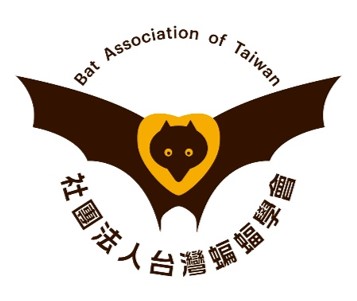蝙蝠研究
2016_臺灣彩蝠的捲葉棲所特徵、族群結構及社會組成_許家維
出版年份:2016
研究生:許家維
分類:碩士論文
題目:利臺灣彩蝠的捲葉棲所特徵、族群結構及社會組成
Title:Day roost characteristics, population structure and social organization of leaf-roosting Taiwanese wolly bat, Keriuoula sp.
摘要:
全世界翼手目(Chiroptera)蝙蝠超過1,232種,使用洞穴、人工建築及植物等多樣性的棲所類型。臺灣的彩蝠(Kerivoula sp.)在近年來被發現其形成小群使用臺灣芭蕉(Musa formosana)新生捲曲葉做為日棲所,但基礎生態資料尚闕如。本研究目的在了解彩蝠的棲所利用、族群結構及社會組成。自2014年7月至2016年5月,以特有生物研究保育中心所屬烏石坑低海拔試驗站轄區內棲息於臺灣芭蕉捲曲葉之彩蝠為對象,每個月1-2次對臺灣芭蕉捲葉形質進行測量,再利用紅外線熱像儀偵測到蝙蝠後,進行捕捉及個體標記,藉由個體的重覆捕捉以了解族群的性別及年齡組成、生殖狀況、每個捲葉內彩蝠群的數量及組成、以及個體對於棲所所在樣區的忠誠度。結果顯示,棲所特徵部分,彩蝠棲息的臺灣芭蕉平均冠高為4.43±1.43 m、平均捲葉長度1.61±0.46 m、平均捲葉口徑大小12±6 cm及平均鬱閉度為76.8±16.5%;彩蝠使用捲葉較長、捲葉口徑較小及鬱閉度較高的芭蕉捲葉。臺灣芭蕉捲葉棲所可利用天數在夏季為1-2天,冬季可達5天以上,但絕大多數的彩蝠群每天更換棲所。族群結構部分,烏石坑地區彩蝠族群量估計2014年7-11月約64.5隻,2015年7-11月約47隻,2014及2015出生的幼蝠性別比均無偏離1:1,但2014及2015年雌性成體數量皆顯著多於雄性成體。彩蝠於五月下旬至六月上旬生殖,第一年出生幼蝠於第二年即具有繁殖的能力。社會組成部分,每個臺灣芭蕉新生捲葉內彩蝠群的隻數介於1-13隻之間,平均3.8±1.5隻,彩蝠群的組成以多雌群為主。兩兩個體間的關聯指數雌-雌配對組合高於雌-雄及雄-雄的配對組合;以兩兩個體的關聯指數進行歸群分析,結果顯示40隻捕獲4次以上個體被分為8個社會群,各個社會群組成以成體雌性及亞成體為主,間雜1-2隻雄性成體,不同社會群對於棲所的忠誠度具有差異。
Abstract:
There are more than 1,232 species of bats (Chiroptera) in the world using many types of roost. In recent years, Taiwanese woolly bat (Kerivoula sp.) was found that it formed a small group and used curled leaves of plantain (Musa formosana) as day roosts. The objective of this study was to understand (1) the characteristics of roosts, (2) population structure and (3) social organization of the woolly bats. Investigations were conducted once to twice monthly from July 2014 to May 2016 in the plantain forest in Wushih Keng, Heping District, Taichung City. Infrared thermal imager was used to detect bats roosting in the curled leaves. Roost characteristics were measured and bats were captured, marked and released. The sex ratio and age composition of population, and the group size and composition in each roost were recorded. The results show that the average height of roosting plants was 4.43±1.43 m, the average length of leaf tubes of the roosts was 1.61±0.46 m, the average diameter of leaf tube opening was 12.0±6.0 cm, and the average canopy coverage was 76.8±16.5%. Roosts used by bats were significantly longer in leaf tube length, wider in diameter of opening and higher in canopy coverage. Leaf tubes suitable for roosting were one to two days in summer and at least five days in winter. The sex ratio of juvenile bats did not deviate from 1:1 in both 2014 and 2015 survey sessions, whereas the sex ratio was female-biased in the adults in both years. The estimated population size in the study area was approximately 64.5 individuals in 2014 and 47 individuals in 2015. Females gave birth between late May and early June across two years and the female bats born in 2014 were capable to reproduce in the next year. The average number of bats in a roost was 3.8±1.5, with a range between 1 and 13. Association between individuals in the female-female pairs was higher than that in male-male pairs and female-male pairs. Based on the association indices measured, the 40 bats that were captured at least four times were divided into eight social groups. These groups were comprised primarily of adult female(s) and juvenile(s), and occasionally 1-2 adult males. Different social groups showed spatial partitioning in roosting patches.
